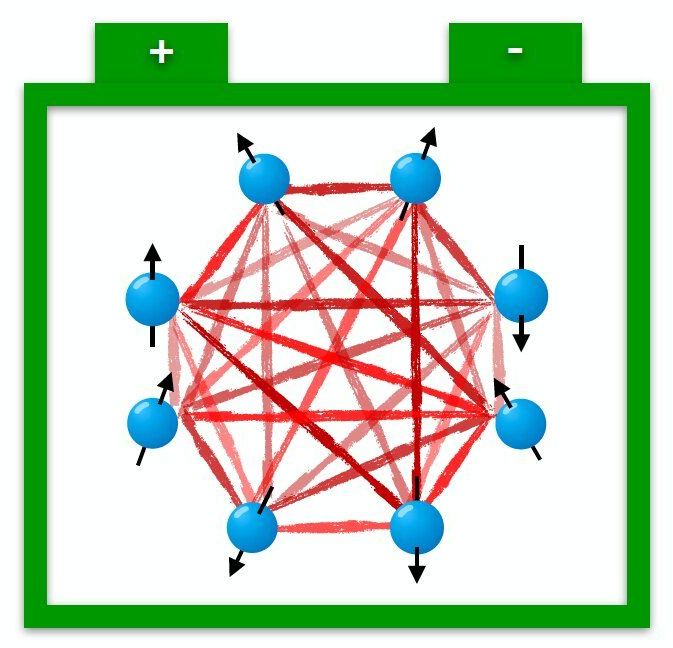What’s happening right now due to the global outbreak of COVID-19 should make us rethink our desire to meet alien lifeforms.


https://youtube.com/watchv=efVBUDnD_no&feature=share
Go to http://ow.ly/4nK830rrtFY to check out The Great Courses Plus and start your free trial!
You can join the chat about this video today (Saturday, Jan 9) at noon Eastern Time or 6pm CET here:
https://talk.conversful.com/c?id=-MQTZqlun1m_0Hw1TSl5
Please support me on Patreon: https://www.patreon.com/Sabine.
In this video I talk about a few approaches to mathematically describe consciousness and their shortcomings. I also briefly talk about what such studies could one day be good for. You can watch the talks from the workshop that I mention (and many more!!) here:
https://www.youtube.com/channel/UCWgIDgfzRDp-PmQvMsYiNlg.
#Science #Mathematics #Consciousness.
Have you been sleeping worse since the pandemic came round? If so, do not despair, you are not alone, studies have found that even amongst those who previously had no problems, there were issues. Now there are many reasons why this might be so, from added stress and uncertainty, to less physical exertion during the day and much more… But, one factor that can play a huge role is your diet. I am sure you know about fast and slow carbs, and I am sure some of you try your hardest to avoid them at all costs…not me though, I am a carb fan lol. But anyway, carbs can actually help you sleep when paired with the right foods because of the way they create competition between amino acids for absorption into muscles, when stimulated by glucose, but on the negative side, quick, or beige, carbs can cause waking during the night, as the blood sugar is not as stable. If you want to find out more, in a bit more depth, along with all the studies I have brought together, then check out this video, all links are in its description. Sleep well wink
In Carbs Sleep Problems — How Nutrition Affects Your Sleep Quality, I look at just that, the importance of the reciprocal link between diet and sleep.
What do you think, leave a comment below with your thoughts… If you want to try Melatonin to aid your sleep, or any other of their products, I have arranged a discount for my friends and viewers at Do Not Age, the highest quality, the lowest prices and the best customer service, all in one place. Just use the code MTB when checking out. https://donotage.org And if you want to watch another video on the importance of sleep then try this — https://youtu.be/iByq-KYVt3I To follow up on the studies I mentioned follow these links — Poor sleep and diet linked (epidemiological study) https://www.ahajournals.org/doi/10.11… of diet on sleep quality https://academic.oup.com/advances/art… Mediterranean diet pattern and sleep duration and insomnia symptoms in the Multi-Ethnic Study of Atherosclerosis https://pubmed.ncbi.nlm.nih.gov/30137… Fiber and Saturated Fat Are Associated with Sleep Arousals and Slow Wave Sleep https://pubmed.ncbi.nlm.nih.gov/26156… Nutritional effects on sleep https://pubmed.ncbi.nlm.nih.gov/21816… Short sleep duration, glucose dysregulation and hormonal regulation of appetite in men and women https://pubmed.ncbi.nlm.nih.gov/23115… Sleep extension is a feasible lifestyle intervention in free-living adults who are habitually short sleepers: a potential strategy for decreasing intake of free sugars? A randomized controlled pilot study https://pubmed.ncbi.nlm.nih.gov/29381…
If you want to try Melatonin to aid your sleep, or any other of their products, I have arranged a discount for my friends and viewers at Do Not Age, the highest quality, the lowest prices and the best customer service, all in one place.
Just use the code MTB when checking out.
https://donotage.org.
And if you want to watch another video on the importance of sleep then try this

JOHANNESBURG — The European Space Agency (ESA) signed a nearly €296 million ($362 million) contract with Thales Alenia Space Jan. 7 to build a European module for NASA’s lunar Gateway space station.
The European System Providing Refueling, Infrastructure and Telecommunications (ESPRIT) module will provide communications and refueling capabilities to Gateway, a planned space station in orbit around the moon intended to support crewed missions to the lunar surface.
Thales Alenia Space announced Oct. 14 that it had been selected to build the ESPRIT Gateway module. On Jan. 7, the contract was finalized and signed by both parties. The project will be led by Thales Alenia Space in Cannes, France, with support from Thales Alenia Space in Italy and the United Kingdom.

The idea of slowing down the ageing process and living healthier, more productive lives is hugely appealing. It’s led to a growing trend for people looking to take control of their own biology, optimising their bodies and minds through ‘biohacking’. But how safe and ethical is this pursuit of longevity? And are there more natural ways of expanding your healthy lifespan? Video by Dan John Animation by Adam Proctor.

Israeli aerospace company Urban Aeronautics announced this week that it sold its first four vertical takeoff and landing (VTOL) aircraft to Hatzolah Air, a nonprofit emergency medical air transport provider based in New York. The organization already operates fixed-wing aircraft (meaning propeller-driven or powered by a jet engine, with wings that don’t move) as part of its emergency missions.
To that end, “flying ambulances” isn’t a new concept; they’ve existed for a long time in the form of helicopters and planes. In fact, the Association of Air Medical Services estimates that around 550000 people get medevaced in the US each year.
But Urban Aeronautics’ Cormorant CityHawk, as the aircraft is called, will bring some functional new features to the skies. Though it’s lightweight and has a compact footprint, its interior cabin is 20 to 30 percent larger than that of a helicopter, meaning it will be able to fit two EMTs, the patient plus a companion, and medical equipment (plus the pilot) without things getting too cramped.

Reactive molecules, such as free radicals, can be produced in the body after exposure to certain environments or substances and go on to cause cell damage. Antioxidants can minimize this damage by interacting with the radicals before they affect cells.
Led by Enrique Gomez, professor of chemical engineering and materials science and engineering, Penn State researchers have applied this concept to prevent imaging damage to conducting polymers that comprise soft electronic devices, such as organic solar cells, organic transistors, bioelectronic devices and flexible electronics. The researchers published their findings in Nature Communications today (Jan. 8).
According to Gomez, visualizing the structures of conducting polymers is crucial to further develop these materials and enable commercialization of soft electronic devices—but the actual imaging can cause damage that limits what researchers can see and understand.

The Sachdev-Ye-Kitaev (SYK) model, an exactly solvable model devised by Subir Sachdev and Jinwu Ye, has recently proved useful for understanding the characteristics of different types of matter. As it describes quantum matter without quasiparticles and is simultaneously a holographic version of a quantum black hole, it has so far been adopted by both condensed matter and high-energy physicists.
Researchers at University of Pisa and the Italian Institute of Technology (IIT) have recently used the SYK model to examine the charging protocols of quantum batteries. Their paper, published in Physical Review Letters, offers evidence of the potential of quantum mechanical resources for boosting the charging process of batteries.
“Previous theoretical studies laid down the idea that entanglement can be used to greatly speed up the charging process of a quantum battery,” Davide Rossini and Gian Marcello Andolina, two of the researchers who carried out the study, told Phys.org, via email. “However, a concrete solid-state model displaying such fast charging was missing, until now.”

Lightmatter bets that optical computing can solve AI’s efficiency problem.